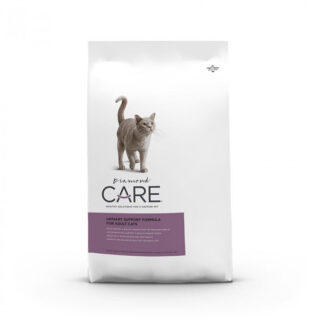Learn how to – How Can We Protect Children from Gambling Ads Online?.
Online gambling is an ever-accelerating industry, its popularity given a turbo-boost by Covid-19, which has positioned iGaming as the conspicuously safer alternative to visiting bricks-and-mortar casinos. But, as a certain superhero might say, with great power comes great responsibility, and some of the biggest iGaming companies have recently been found wanting.
In August of this year, the UK’s Advertising Standards Authority revealed that four major gambling operators had breached rules put in place to shield children from online advertising aimed at adult markets. The problem was discovered during a three-month sweep of YouTube channels and other websites. Worryingly, a whopping 70 different gambling ads ran on eight different websites used by under-18s. We don’t know the names of the offending gambling operators because the ASA has decided – like a firm but fair parent – to give them a last chance to shape up before being named and shamed.
“The ASA is using technology to proactively monitor online ads to help build a culture of zero tolerance for age-restricted ads appearing on websites aimed at children,” a spokesperson for the watchdog said. “We expect advertisers and the parties they contract with to use the sophisticated tools available to them”, but that may not be enough to incentivise operators to target their ads responsibly.
The revelation hasn’t just cast the gambling industry in a less-than-complimentary light. Alcohol, junk food and e-cigarette ads were also revealed to have been placed by 35 advertisers on a succession of websites and YouTube channels that were aimed at kids. All of which points to a fundamental problem with age-restricted advertising not being particularly age-restricted after all.
With pretty fortunate timing, the Betting and Gaming Council – the trade body representing the whole of the gambling industry – has now released the latest edition of the Industry Code for Socially Responsible Advertising. It states in no uncertain times that “the advertising of adult-only gambling products or product suppliers should never be targeted at children”. It goes on to require that “sponsored/paid-for social media advertisements must be targeted at consumers aged 25+”, unless the social media platform can prove its age verification systems can keep under-18s from accessing the content. In which case, “the Betting and Gaming Council,on the recommendation of operators and in consultation with other third parties, may consider whether to reduce the age filter to 18+”.
These new guidelines also vow to prevent children from being inadvertently presented with gambling advertising when using search engines. “In order to introduce an enhanced level of consumer protection,” the code states, “the industry will introduce a shared blacklist of negative keywords against which no gambling advertising should be served. The blacklist will include keywords which indicate vulnerability and keywords which relate to children”.
Of course, time will have to tell if these new measures will have any measurable impact, and whether official crackdowns will be required. There’s certainly a precedent for the latter. Back in 2019, the ASA sprang into action when ads for the likes of William Hill Vegas and Betfair Bingo popped up on the Looney Tunes World of Mayhem app. The ASA promptly banned the ads and the gambling companies terminated their relationships with Tapjoy, the affiliate firm which placed the ads on the app.
“This complaint relates to the actions of a third party publisher, which mistakenly opted in to accept adult advertising content – including from Betfair – on its app,” Betfair said in a statement. “This should not have happened and we immediately stopped working with the publisher once the error was discovered.”
The case highlighted the genuine difficulties with ensuring the wrong kind of advertising doesn’t flash in front of the wrong eyes. It’s not a simple matter of blaming gambling companies for unscrupulously targeting younger, impressionable audiences. In the case of the Looney Tunes app debacle, it was a genuine mistake by Tapjoy, who said that the app had been incorrectly categorised as an appropriate setting for mature ads. Errant algorithms and the general cross-pollination of the Internet can lead to advertising essentially running amok.
The ASA itself fully appreciates the complexity of the situation, saying in a recent statement that “Gambling operators certainly don’t intend their ads to appear on websites disproportionately popular with children”, and acknowledging that “most operators avoid this unwanted outcome by careful management of the numerous factors and third parties involved in distributing ads online”.
But, that being said, the watchdog has shown its fangs by threatening to shame those companies recently shown to be in breach of the rules, and stating/warning that they want to “foster a culture of zero tolerance to age-restricted ads appearing on websites and YouTube channels disproportionately popular with children.”
YouTube itself is taking more aggressive action to safeguard young people online. It was recently announced that the company will be deploying AI that can automatically identify videos that are not age-appropriate, requiring more users to sign into their accounts to verify their age. However, it’s fair to say that the responsibility doesn’t just lie with casino operators and social media platforms. Enforcing regulations and restrictions is part of the solution, but awareness at home – among parents and guardians – is surely just as important.
There are some basic ways to stay vigilant and reduce the probability of children in your care from being exposed to such advertising. These include:
- Being aware of what they’re watching and playing, from their favourite YouTube channels to mobile apps. Show and interest, talk openly about what they’re into, watch and play together;
- Paying for the ad-free version of apps, if you can afford to do so;
- Ensuring that if the children in your care are under 13, they use YouTube Kids rather than YouTube – it provides a variety of controls over what kind of material can be accessed.
As technology becomes ever smarter, and regulations get ever stricter, it’s likely to become less and less likely that age-restricted adverts creep onto inappropriate platforms, but we’re not quite there yet. And it’s down to everyone from the ASA to gambling operators to children’s guardians to do their bit in the meantime.









Leave a Reply
You must be logged in to post a comment.